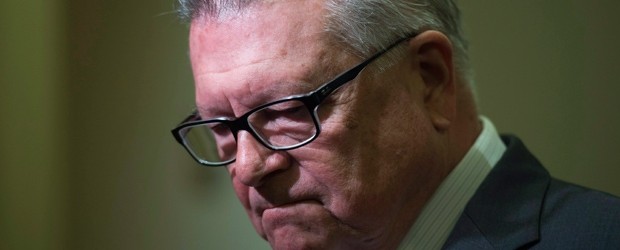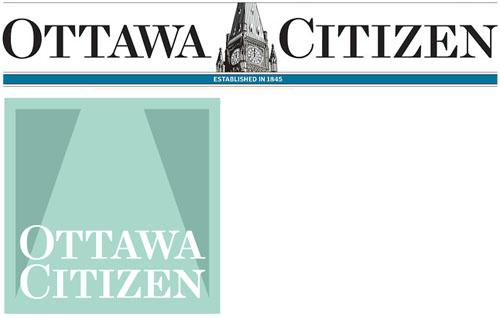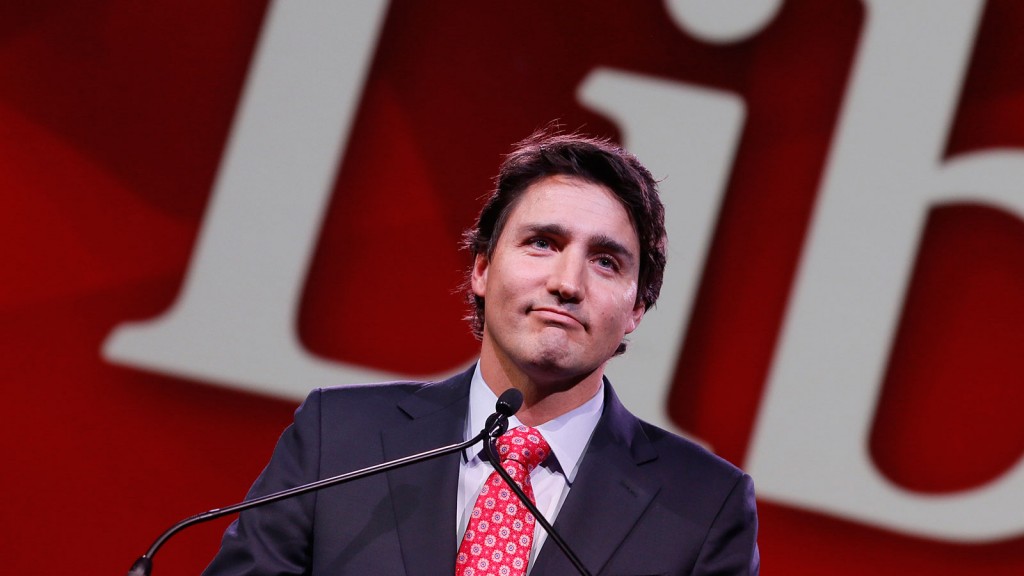Why are the Liberals playing this game? The textbook approach to winning power, after all, is to play to the median voter, not the left wing of the left wing


Why are the Liberals playing this game? The textbook approach to winning power, after all, is to play to the median voter, not the left wing of the left wing
There was a time when the Liberals were known as a pragmatic, centrist party, flexible to a fault, stealing from parties to the right and left as circumstances and electoral calculations dictated. It drove their more ideologically consistent opponents to distraction. “Don’t like our policies? We’ve got new ones,” the joke ran.
They leaned left, especially in the 1970s, but only so far. If the NDP were “Liberals in a hurry” (as Mackenzie King called their forebears in the Coooperative Commonwealth Federation), the Grits were social democrats in aspic. Or, when the situation called for it, conservatives in drag: having campaigned against free trade and austerity, the Chretien Liberals signed NAFTA and cut spending 15 per cent in two years.
No more. At both the federal and provincial level, the quintessential party of the centre is now engaged in an all-out bidding war with the NDP for the title of party of the left. The Trudeau and Wynne parties — there are strong ties between them — had already ranged so far to the left as to be unrecognizable to previous generations of Liberals. Trudeau, for example, has overseen the biggest shift into deficit, outside of a recession, in 40 years, on top of top-bracket tax increases, an expanded CPP, legalized marijuana and carbon pricing.
But the past few weeks have seen an acceleration of this trend. With election campaigns in the offing at both levels, the Liberals and NDP have taken turns unveiling policy proposals that are noteworthy for their unapologetic extravagance.
First to fire was the federal NDP, whose February policy convention endorsed a universal free prescription drug plan, free dental care, free university tuition and legalized consumption of all drugs, among a long list. They were matched, almost policy for policy, by last week’s Liberal convention, which threw in a guaranteed annual income, decriminalizing prostitution and a tunnel to Newfoundland for good measure. For reference, pharmacare and a GAI alone would cost the federal government tens of billions of dollars, annually.

Liberal leader Justin Trudeau gives his keynote address at the Liberal Biennial Convention in Montreal, February 22, 2014. Credit: Christinne Muschi/Reuters
At the provincial level, the Wynne government’s March budget signalled an abrupt reversal from its previous leisurely stroll towards a balanced budget (while racking up billions more in debt off-budget), with a massive boost in spending on everything from child care to seniors to expanded drug and dental coverage. Not to be outdone, weeks later the provincial NDP issued a platform, with even larger increases in spending, free (or heavily subsidized) daycare for all, free dental care for all, free drugs for all — and higher taxes for some.
What’s going on? Why, in particular, are the Liberals playing this game? The textbook approach to winning power, after all, is to play to the median voter, not the left wing of the left wing. To be sure, the Liberals perennial strategy is to lure NDP leaners into the fold, usually by frightening them with tales of what the Conservatives would do to them if ever they were so foolish as to “split the vote.” But they are at most times constrained to keep at least one eye on their right flank, lest more fiscally conservative Blue Liberals decamp for the Tories. Not now, apparently.
You can see, perhaps, why the Wynne Liberals would have abandoned the centre. They are so far back in the polls they must be concerned that the NDP not pull ahead of them, and become the party of choice for voters seeking to “stop the Tories.” But the Trudeau Liberals are still very much in the hunt, having closed the gap with the Conservatives in recent polls.
The Harper Tories, it is true, were all over the map, ideologically. But the Scheer Tories are simply inert
I think a contributing factor in both cases is that the Blue Liberals are not so much in play as they might be expected to be — because the Conservatives are not offering them an attractive enough alternative. They might, were they not so distracted, as a Conservative friend has put it, by “this populist moment” they are in.
Had the provincial Conservatives elected the moderate Christine Elliott as their leader, the election might as well have been called right then. But with Doug Ford at the helm, the Wynne Liberals can afford to gamble on centrist voters being so repelled as to hold their noses and vote Liberal, without prejudice to their efforts to pander to the NDP.
As for the federal Conservatives, what reason have they given for the Blue Liberals who abandoned them in 2015 to come back to them in 2019? Who even knows what the party, under its current leadership, stands for, other than keeping peace with the populists?
Once again, the contrast between the aggressive self-confidence of the left, as displayed in the constant two-party barrage of proposals to expand the state’s reach, and the timidity of the right, is striking. The Harper Tories, it is true, were all over the map, ideologically. But the Scheer Tories are simply inert.
Perhaps it is simply the times. Two issues dominate at the moment — climate change and the many and varied claims advanced in the name of identity politics — which the left has used to drive its agenda across a range of fronts. A generation ago it was deficits and the Cold War, which the right used to its advantage. Either conservatives will have to wait until some other meta-issue catches the public’s attention. Or they will have to start coming up with answers to the issues of today.
Because at the moment the left does not even feel obliged to pretend to pay them any heed.
You must be logged in to post a comment.